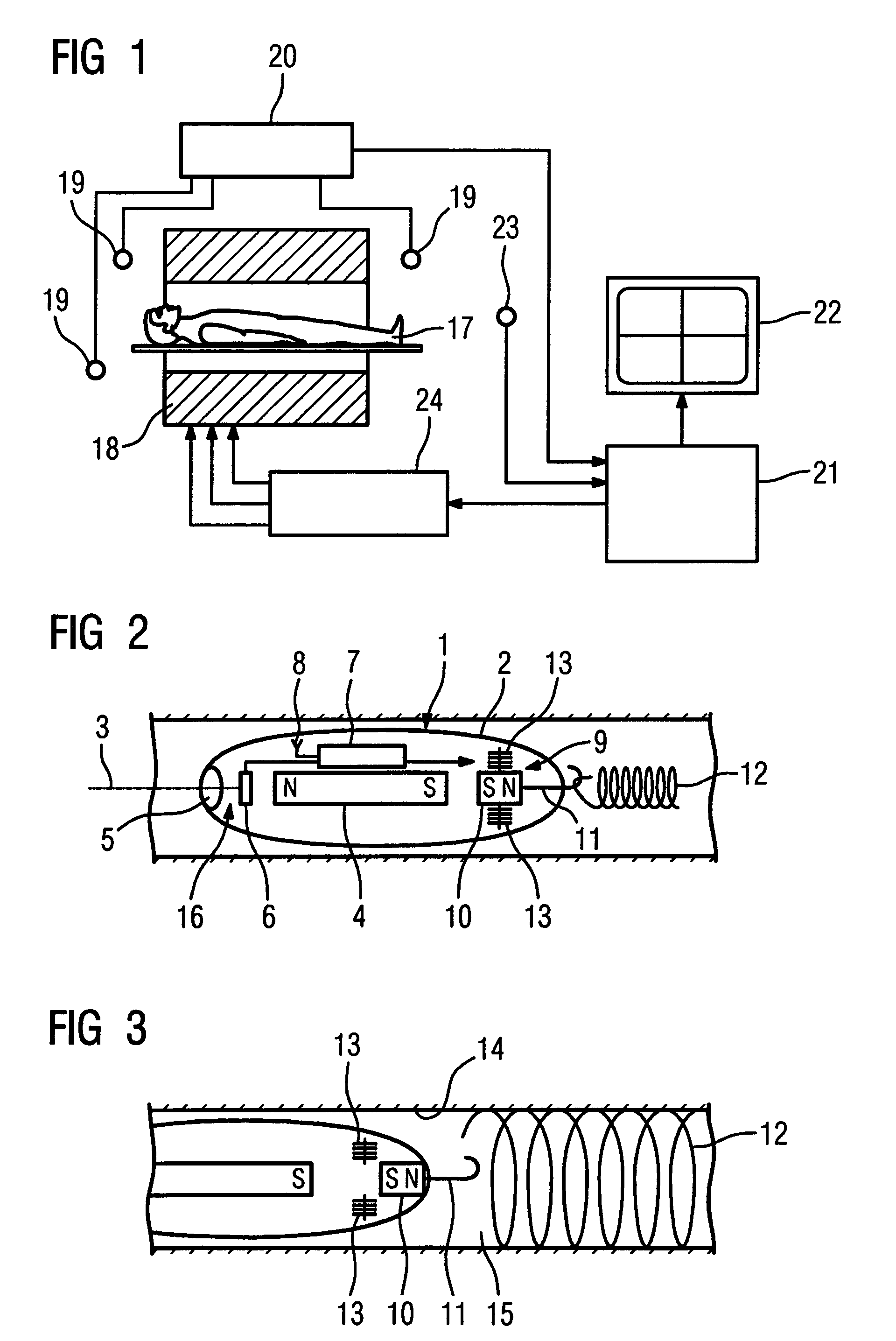Device for introducing a stent into a hollow organ
a technology a hollow organ, which is applied in the field of devices for introducing a stent into a hollow organ, can solve the problems of inability to diagnose by conventional endoscopic techniques, inability to treat lesions of the small intestine with endoscopic biopsy or even surgery, and inability to achieve the effect of treating lesions with endoscopic biopsy
- Summary
- Abstract
- Description
- Claims
- Application Information
AI Technical Summary
Benefits of technology
Problems solved by technology
Method used
Image
Examples
Embodiment Construction
[0025]The endorobot 1 shown in FIGS. 2 and 3 has an elongated, for example ellipsoid housing 2 in which a bar magnet 4 is arranged in line with the longitudinal axis 3. A video camera 16 including a lens 5 and a CD sensor 6 takes pictures which can be transmitted to the outside via an HF transmitter / receiver 7 and antenna 8, and control commands can also be sent to the receiver 7 from outside via the antenna. In this way it is possible, from outside, to issue control commands, for example for a coupling mechanism 9.
[0026]In the illustrative embodiment shown according to FIGS. 2 and 3, this coupling mechanism 9 includes a magnet 10 which is provided with a hook 11 for attachment of the small folded-up stent 12. By use of a current pulse acting on the piezo stack 13, the locking of the small holding magnet is opened, the coupling travels outward and the connection to the stent is released. The stent then opens in the axial direction and also radially outward so that the stent, as is s...
PUM
 Login to View More
Login to View More Abstract
Description
Claims
Application Information
 Login to View More
Login to View More - R&D
- Intellectual Property
- Life Sciences
- Materials
- Tech Scout
- Unparalleled Data Quality
- Higher Quality Content
- 60% Fewer Hallucinations
Browse by: Latest US Patents, China's latest patents, Technical Efficacy Thesaurus, Application Domain, Technology Topic, Popular Technical Reports.
© 2025 PatSnap. All rights reserved.Legal|Privacy policy|Modern Slavery Act Transparency Statement|Sitemap|About US| Contact US: help@patsnap.com


